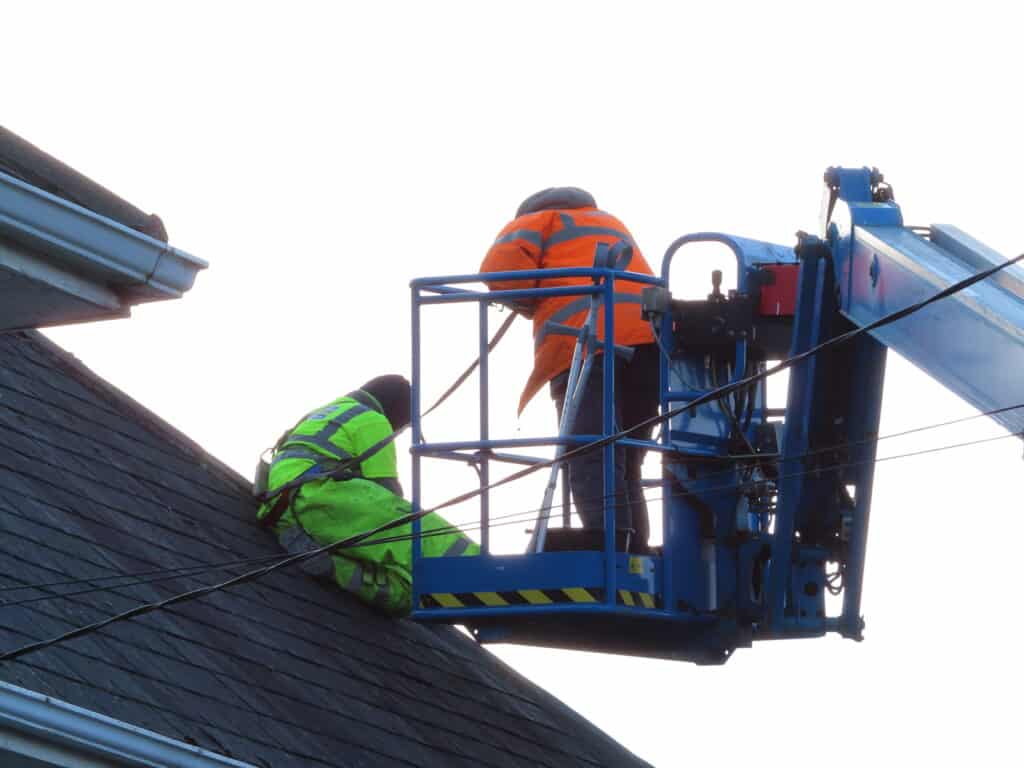Understanding Roof Replacement Costs: What’s the Most Expensive Part of a New Roof?
A new roof doesn’t just include slats or tiles. It’s a complex system that involves labour, materials, insulation, ventilation, flashing, and often structural repairs. Understanding where the bulk of the cost goes can help you budget effectively and make smarter decisions.
- Roofing Materials: The Leading Cost Component
The roofing material is typically the most expensive part of a new roof. Prices vary dramatically based on type, quality, durability, and location.
Asphalt Slates
- Cost-effective and widely used
- Lifespan: 15–30 years
- €40–€80 per m²
Metal Roofing
- Highly durable and energy efficient
- Lifespan: 40–70 years
- €70–€150 per m²
Natural Slate
- Premium appearance and longevity
- Lifespan: Over 100 years
- €100–€180+ per m²
Fibre Cement Slates
- Man-made and budget-friendly
- Uniform appearance
- €10–€20 per m²
Clay and Concrete Tiles
- Traditional, with a wide design range
- Durable but heavy
- €50–€120 per m²
The choice of material will significantly affect both the cost and aesthetics of your roof. Premium materials like slate and zinc often require reinforced support structures, increasing the overall cost.
- Labour and Installation Complexity
Labour costs usually run a close second to materials. Installing a roof is a skilled, labour-intensive process. Factors influencing labour costs include:
Roof Shape and Pitch
- Steeper roofs require more time and safety precautions.
- Complex shapes, dormers, and valleys add to the difficulty.
Accessibility
- Multi-storey homes or hard-to-reach roofs increase labour time and equipment costs.
Local Wages
- Labour rates differ by region across the UK and Ireland.
Seasonality
- Spring and summer are peak roofing seasons, which can increase demand and costs.
Hiring qualified tradesmen is essential. Poor workmanship can lead to costly future repairs and void manufacturer warranties.
- Underlying Structural Issues
Structural repairs can surprise homeowners with hidden costs. These issues are usually uncovered only after the old roof is removed.
Roof Decking Replacement
- Rotten or damaged boards must be replaced.
- Common in older homes or those with previous leaks.
Truss or Rafter Repairs
- Signs of sagging, termite damage, or dry rot need immediate attention.
Insulation Damage
- Wet or mouldy insulation must be removed and replaced to prevent health hazards.
These repairs are non-negotiable if the structural integrity of your roof is compromised.
- Roof Design and Features
A complex roof design not only impacts aesthetics but also influences cost.
Skylights
- Must be removed and reinstalled or replaced
- Requires precise flashing and waterproofing
Chimneys and Dormers
- Extra cutting, sealing, and flashing increase installation time
Multiple Roof Planes
- Each junction adds to labour and materials
Green Roofs or Solar Panels
- Require special support systems and detailing
- Additional costs for reinforcements and coordination
Custom architectural features are attractive but significantly increase roof replacement expenses.
- Roofing Accessories and Systems
Beyond the outer covering, a roofing system includes several accessory components critical for long-term performance:
Waterproof Underlayment
- Sits beneath the roofing material
- Essential in preventing moisture ingress
- High-performance versions cost more but improve lifespan
Roof Ventilation
- Prevents condensation, mould, and overheating
- Includes ridge vents, soffit vents, and gable vents
Flashing and Sealants
- Metal or waterproof materials that seal roof transitions
- Labour-intensive to install around chimneys, valleys, or walls
These hidden but vital components ensure your roof’s resilience in harsh UK weather.
- Waste Management and Permits
Even tearing off your old roof has a price.
Waste Disposal
- Heavy tiles, slates, and slates require skip hire
- Disposal of hazardous materials (e.g., asbestos) raises costs
Scaffolding
- Required for most UK roof jobs for worker safety
- Scaffold hire can run into thousands for multi-storey homes
Permits and Compliance
- Building regulations (especially in conservation areas) may require formal approval
- Failure to comply can lead to fines or legal issues upon sale
Budgeting for these logistical essentials avoids delays and legal headaches.
Tips to Control Roof Replacement Costs
While you may not be able to avoid all expenses, you can certainly optimise your spending:
1. Choose Materials Strategically
- Balance longevity, aesthetics, and budget
- Consider mid-range options like concrete tiles for value
2. Compare Quotes
- Obtain at least three quotes from accredited professionals
- Ensure all quotes include hidden costs like waste disposal and permits
3. Time Your Project
- Consider off-season replacements (late autumn or early winter) to reduce labour charges
4. Plan for Extras
- Allocate 10–20% of your budget for unexpected repairs
- Have your roof inspected in advance to reduce surprises
5. Opt for Warranty and Insurance-Backed Installers
- Ensure peace of mind with workmanship and product guarantees
- Prefer installers who comply with BS 5534 roofing standards
Final Thoughts
The most expensive part of a new roof is usually the roofing material, followed closely by labour and structural repairs. However, the real cost lies in how well your roof is installed and protected against future problems. From complex rooflines to premium materials and hidden structural repairs, many factors shape your overall investment.
If you’re considering a roof replacement, understanding these variables will help you make informed, financially smart decisions. Always work with certified roofing professionals, and remember — a well-installed roof is not just a necessity, but a long-term asset.
For homeowners in Dublin and Navan, Weathersafe Roofing is the trusted choice for high-quality roof replacements and repairs. Our team delivers expert craftsmanship and outstanding professionalism every time. Contact us today for a free written quote and discover why Weathersafe is Dublin’s go-to roofing expert.


